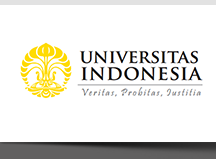Abstract
This study aims to assess Indonesia’s readiness to implement carbon trading in 2025 to achieve net zero emissions by 2060. The research uses a mixed-method approach, combining literature review, multivariate linear regression, and Vector Error Correction Model (VECM). The results indicate that the Human Development Index (HDI) has a negative and significant impact on CO2 emissions in the long term. This impact is greater than the results observed in Singapore and Thailand. With established policies and a demographic bonus in 2045, optimizing human resources is crucial for achieving net zero emissions by 2060.
Bahasa Abstract
Penelitian ini bertujuan untuk melihat kesiapan Indonesia dalam mengimplementasi perdagangan karbon pada tahun 2025 untuk menyongsong net zero emission pada tahun 2060. Penelitian ini menggunakan metode mixed-method dengan menggabungkan literature review, regresi linier berganda, dan Vector Error Correction Model (VECM). Hasil penelitian menunjukkan bahwa Indeks Pembangunan Manusia (IPM) berpengaruh negatif dan signifikan terhadap emisi CO2 dalam jangka panjang. Hasil ini lebih tinggi daripada hasil yang diperoleh pada studi di Singapura dan Thailand. Dengan kebijakan yang sudah siap dan bonus demografi di tahun 2045, potensi sumber daya manusia perlu dioptimalkan untuk mencapai net zero emission di tahun 2060.
References
[1] Asongu, S. A. (2018). CO 2 emission thresholds for inclusive human development in sub-Saharan Africa. Environmental Science and Pollution Research, 25, 26005-26019. doi: https://doi.org/10.1007/s11356-018-2626-6.
[2] Badan Pusat Statistik. (2015). Indeks Pembangunan Manusia 2014. Diakses 23 Juni 2024 dari https://www.bps.go.id/id/publication/2015/11/24/25966cc343193d0f0e257855/indeks-pembangunan-manusia-2014.html.
[3] Bieth, R. C. E. (2021). The influence of gross domestic product and human development index on CO2 emissions. Journal of Physics: Conference Series, 1808(1), 012034. doi: 10.1088/1742-6596/1808/1/012034.
[4] Bunjongsiri, K. (2019). The overview of carbon credit market in Thailand. Sau Journal of Science & Technology, 5(2), 1-9.
[5] Chen, X., & Zhang, M. (2022). Carbon emission trading market: International experience, Chinese characteristics and policy recommendations. Shanghai Finance, 9, 22-33.
[6] Dickey, D. A., & Fuller,W. A. (1981). Likelihood ratio statistics for autoregressive time series with a unit root. Econometrica, 49(4), 1057-1072. doi: https://doi.org/10.2307/1912517.
[7] Dimante, D., Tambovceva, T., & Atstaja, D. (2016). Raising environmental awareness through education. International Journal of Continuing Engineering Education and Life Long Learning, 26(3), 259-272. doi: https://doi.org/10.1504/ijceell.2016.078446.
[8] Douenne, T., & Fabre, A. (2020). French attitudes on climate change, carbon taxation and other climate policies. Ecological Economics, 169, 106496. doi: https://doi.org/10.1016/j.ecolecon.2019.106496.
[9] Duangklad, P. (2023, 27 November). Unmasking ’phantom’ carbon credits in Thailand: A genuine answer to climate change or chimera?. Earth Journalism Network. Diakses 23 Juni 2024 dari https://earthjournalism.net/stories/unmasking-phantom-carbon-credits-in-thailand-agenuine-answer-to-climate-change-or-chimera.
[10] Engle, R. F., & Granger, C. W. (1987). Co-integration and error correction: Representation, estimation, and testing. Econometrica, 55(2), 251-276. doi: https://doi.org/10.2307/1913236.
[11] Farida, Y., Siswanto, N., & Vanany, I. (2023). Forecasting CO2 emission in Indonesia fromthe economic and environment impact using vector error correction model. MSIE ’23: Proceedings of the 2023 5th International Conference on Management Science and Industrial Engineering, 42-49. doi: https://doi.org/10.1145/3603955.3603963.
[12] Firdaus, S. U., & Arkananta, F. N. S. (2024). Carbon trading and its role in shaping Indonesia’s environmental resilience to climate change. IOP Conference Series: Earth and Environmental Science, 1362(1), 012005). doi: 10.1088/1755- 1315/1362/1/012005.
[13] Ghasemi, M., Rajabi, M. S., & Aghakhani, S. (2023). Towards sustainability: The effect of industries on CO2 emissions. Journal of Future Sustainability, 3(2), 107-118. doi: 10.5267/j.jfs.2022.12.002.
[14] Granger, C.W., & Newbold, P. (1974). Spurious regressions in econometrics. Journal of Econometrics, 2(2), 111-120. doi: https://doi.org/10.1016/0304-4076(74)90034-7.
[15] Hao, Y. (2022). Effect of economic indicators, renewable energy consumption and human development on climate change: An empirical analysis based on panel data of selected countries. Frontiers in Energy Research, 10, 841497. doi: https://doi.org/10.3389/fenrg.2022.841497.
[16] IETA. (2024, 31 Juli). Launch of Singapore Carbon Market Alliance (SCMA) to enable access to and supply of high-quality carbon credits. Press Releases. International Emissions Trading Association. Diakses 23 Juni 2024 dari https://www.ieta.org/launch-of-singapore-carbon-market-alliance-scmato-enable-access-to-and-supply-of-high-quality-carboncredits/.
[17] Jia, S., Zhu, X., Gao, X., & Yang, X. (2024). The influence of carbon emission trading on the optimization of regional energy structure. Heliyon, 10(11), e31706. doi: https://doi.org/10.1016/j.heliyon.2024.e31706.
[18] Jiang, X., Xu, W., & Du, L. (2024). Empirical analysis of the impact of China’s carbon emissions trading policy using provincial-level data. Energy Informatics, 7(1), 40. doi: https://doi.org/10.1186/s42162-024-00346-y.
[19] Johansen, S., & Juselius, K. (1992). Testing structural hypotheses in a multivariate cointegration analysis of the PPP and the UIP for UK. Journal of Econometrics, 53(1-3), 211-244. doi: https://doi.org/10.1016/0304-4076(92)90086-7.
[20] Lateko, A. A. H., & Akil, Y. S. (2024). A VECM analysis of the impact of economic growth and investment on electricity consumption in Indonesia. Przeglad Elektrotechniczny, 2024(2), p. 140. doi: https://doi.org/10.15199/48.2024.02.28.
[21] Li, F., Zhang, J., & Li, X. (2022). Research on supporting developing countries to achieve green development transition: Based on the perspective of renewable energy and foreign direct investment. Journal of Cleaner Production, 372, 133726. doi: https://doi.org/10.1016/j.jclepro.2022.133726.
[22] Li, Z. Z., Li, R. Y. M., Malik, M. Y., Murshed, M., Khan, Z., & Umar, M. (2021). Determinants of carbon emission in China: How good is green investment?. Sustainable Production and Consumption, 27, 392-401. doi: https://doi.org/10.1016/j.spc.2020.11.008.
[23] Liu, L., Chen, C., Zhao, Y., & Zhao, E. (2015). China’s carbon-emissions trading: Overview, challenges and future. Renewable and Sustainable Energy Reviews, 49, 254- 266. doi: https://doi.org/10.1016/j.rser.2015.04.076.
[24] NCCS. (2023). Carbon tax. National Climate Change Secretariat. Diakses 10 November 2024 dari https://www.nccs.gov.sg/singapores-climate-action/ mitigation-efforts/carbontax/.
[25] NCCS. (2025). National Climate Change Secretariat: About NCCS. Diakses 10 November 2024 dari https://www.nccs.gov.sg.
[26] Ozcan, B., Danish, D., & Bozoklu, S. (2021). Dynamics of ecological balance in OECD countries: Sustainable or unsustainable?. Sustainable Production and Consumption, 26, 638-647. doi: https://doi.org/10.1016/j.spc.2020.12.014.
[27] Pahlepi, R., Hidayati, N., Yanti, R. D., Enjelina, T., & Aghnia, H. (2023). Perbandingan model VECM dan ECM dalam menganalisis hubungan antara inflasi dan indeks harga konsumen bulanan di Kota Bengkulu (2018-2022). Diophantine Journal of Mathematics and Its Applications, 2(2), 91-100. doi: https://doi.org/10.33369/diophantine.v2i2.32044.
[28] Pervaiz, R., Faisal, F., Rahman, S. U., Chander, R., & Ali, A. (2021). Do health expenditure and human development index matter in the carbon emission function for ensuring sustainable development? Evidence from the heterogeneous panel. Air Quality, Atmosphere & Health, 14(11), 1773-1784. doi: https://doi.org/10.1007/s11869-021-01052-4.
[29] Purnamasari, B. D., & Nurachmah, A. E. (2023). The fair and acceptable implementation of carbon market in Indonesia. IOP Conference Series: Earth and Environmental Science, 1267, 012034. doi: 10.1088/1755-1315/1267/1/012034.
[30] Putra, J. J. H., Nabilla, N., & Jabanto, F. Y. (2021). Comparing “carbon tax” and “cap and trade” as mechanism to reduce emission in Indonesia. International Journal of Energy Economics and Policy, 11(5), 106-111. doi: https://doi.org/10.32479/ijeep.11375.
[31] Rafiqi, I. D., & Mentari, N. (2024). Comparison of carbon trading in Asean countries: An explanation from a policy perspective. Journal of Law and Policy Transformation, 9(1), 1-18. doi: https://doi.org/10.37253/jlpt.v9i1.9044.
[32] Sabir, S., & Gorus, M. S. (2019). The impact of globalization on ecological footprint: Empirical evidence from the South Asian countries. Environmental Science and Pollution Research, 26, 33387-33398. doi: https://doi.org/10.1007/s11356-019-06458-3.
[33] Saputra, K. A. K., Dharmawan, N. A. S., Kawisana, P. G. W. P., & Larasdiputra, G. D. (2023). Potential carbon tax in indonesia: A literature review. International Journal of Environmental, Sustainability and Social Science, 4(6), 1670- 1677. doi: https://doi.org/10.38142/ijesss.v4i6.891.
[34] Tampubolon, R. (2022). Perdagangan karbon: Memahami konsep dan implementasinya. Standar: Better Standard Better Living, 1(3), 25-29.
[35] The World Bank Group. (2025). State and trends of carbon pricing dashboard. Diakses 15 November 2024 dari https://carbonpricingdashboard.worldbank.org/.
[36] Winter, J. (2020). Carbon pricing in a federal state: The case of Canada. ifo DICE Report, 18(1), 13-19. Ifo Institute – Leibniz Institute for Economic Research at the University of Munich. Diakses 10 November 2024 dari https://www.ifo.de/DocDL/ifo-dice-2020-1-Winter-Carbon-Pricing-in-a-Federal-State-The-Case-of-Canada-spring.pdf.
[37] World Bank. (2025). Manufacturing, value added (% of GDP): World Bank national accounts data, and OECD National Accounts data files. Diakses 10 November 2024 dari https://data.worldbank.org/indicator/NV.IND.MANF.ZS.
[38] Yang, B., Wu, N., Tong, Z., & Sun, Y. (2022). Narrativebased environmental education improves environmental awareness and environmental attitudes in children aged 6–8. International Journal of Environmental Research and Public Health, 19(11), 6483. doi: https://doi.org/10.3390/ijerph19116483.
Recommended Citation
Ferdiansyah, Muhammad Rayhan Ali; Rosyadah, Hanif; and Ramadhan, Fikri Fajar
(2025)
"Studi Komparasi Kesiapan Indonesia Menerapkan Carbon Trade 2025,"
Jurnal Ekonomi dan Pembangunan Indonesia: Vol. 25:
No.
1, Article 5.
DOI: 10.7454/jepi.v25i1.1624
pp.80-94
Available at:
https://scholarhub.ui.ac.id/jepi/vol25/iss1/5







